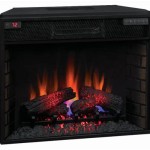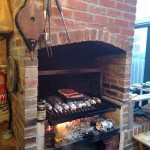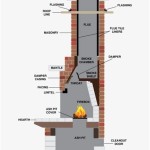Electric Heater Fireplaces: An Examination of Functionality and Benefits
Electric heater fireplaces, also known as electric fireplaces, have emerged as a popular alternative to traditional wood-burning or gas fireplaces. These appliances offer a combination of aesthetic appeal and functional heating, making them suitable for a variety of living spaces. This article will delve into the operational mechanisms, advantages, and considerations surrounding electric heater fireplaces.
Unlike traditional fireplaces, electric heater fireplaces do not require a chimney or venting system. This feature significantly simplifies installation and makes them adaptable to locations where conventional fireplaces are impractical or impossible. The absence of open flames also eliminates the risks associated with combustion, such as carbon monoxide poisoning, making them a safer option for households with children or pets.
The operational principle of an electric heater fireplace involves converting electrical energy into heat. This conversion is typically achieved through the use of heating coils or infrared quartz elements. The heated air is then circulated into the room via a fan system. The visual effect of flames is usually created by reflecting light onto a rotating or oscillating component, simulating the appearance of a real fire. Many models offer adjustable flame brightness and speed, allowing users to customize the ambiance to their preferences.
Electric heater fireplaces are available in a wide range of styles, sizes, and designs. They can be incorporated into existing fireplace mantels, mounted on walls, or used as freestanding units. This versatility contributes to their appeal, as they can seamlessly integrate into various interior design schemes. The availability of diverse styles also allows consumers to select a unit that complements their existing furniture and décor.
Energy Efficiency and Heating Capabilities
One of the primary considerations when evaluating heating appliances is energy efficiency. Electric heater fireplaces generally operate at a higher efficiency rate compared to traditional wood-burning fireplaces, as they convert nearly all the electrical energy into heat. This minimizes energy waste and reduces overall heating costs. However, it is crucial to note that the heating capacity of an electric fireplace is limited by its wattage rating. Most models are designed to heat smaller to medium-sized rooms effectively.
The heating output of an electric fireplace is typically measured in British Thermal Units (BTUs) or wattage. A higher BTU or wattage rating indicates a greater heating capacity. When selecting an electric fireplace, it is important to assess the size of the room to be heated and choose a unit with an appropriate heating output. Overestimating the heating capacity can lead to unnecessary energy consumption, while underestimating it may result in insufficient heating.
Many electric fireplaces offer adjustable thermostat settings, allowing users to maintain a consistent room temperature. The thermostat controls the heating element, cycling it on and off as needed to maintain the desired temperature. This feature enhances energy efficiency by preventing the fireplace from continuously operating at full capacity.
Furthermore, some models incorporate zone heating capabilities. Zone heating involves heating only the occupied areas of a building, rather than heating the entire space. This approach can significantly reduce energy consumption and heating costs, especially in larger homes or apartments. Electric fireplaces are well-suited for zone heating applications, as they can be easily moved and positioned in specific areas of a room.
It's important to understand that an electric fireplace is generally best used as a supplemental heating source, rather than a primary heating system for an entire home. While they can efficiently heat individual rooms, they are not typically designed to replace central heating systems in colder climates.
Safety Features and Environmental Considerations
Safety is a paramount concern when selecting any heating appliance. Electric heater fireplaces offer several safety advantages compared to traditional fireplaces. The absence of open flames eliminates the risk of accidental burns and reduces the likelihood of house fires. Moreover, electric fireplaces do not produce carbon monoxide, a colorless and odorless gas that can be fatal. This eliminates the need for carbon monoxide detectors and regular chimney inspections.
Many electric fireplaces are equipped with safety features such as overheat protection. This feature automatically shuts off the heating element if the unit reaches an unsafe temperature, preventing overheating and potential fire hazards. The exterior surfaces of electric fireplaces typically remain cool to the touch, minimizing the risk of burns, especially for children and pets.
From an environmental perspective, electric heater fireplaces are generally considered to be more environmentally friendly than traditional wood-burning fireplaces. Wood-burning fireplaces release particulate matter and other pollutants into the atmosphere, contributing to air pollution. Electric fireplaces do not produce any direct emissions, making them a cleaner alternative. However, it is important to consider the source of the electricity used to power the fireplace. If the electricity is generated from renewable sources, such as solar or wind power, the environmental impact is further reduced.
The manufacturing process of electric fireplaces also involves the use of materials and resources. Consumers can opt for models made from sustainable materials or those that are designed for longevity, reducing the need for frequent replacements. Proper disposal of electric fireplaces at the end of their lifespan is also important to minimize environmental impact. Recycling programs for electronic waste can help ensure that materials are recovered and reused, rather than ending up in landfills.
Additionally, the absence of wood consumption in electric fireplaces helps to conserve forest resources and reduce deforestation. Wood-burning fireplaces require a continuous supply of firewood, which can contribute to the depletion of forests and the destruction of natural habitats.
Installation, Maintenance, and Cost
The installation of an electric heater fireplace is typically straightforward and does not require professional assistance. Most models simply plug into a standard electrical outlet. Wall-mounted or built-in models may require some minor carpentry or electrical work, but the installation process is generally less complex and less expensive than installing a traditional fireplace.
Maintenance requirements for electric fireplaces are minimal. They do not require chimney cleaning, ash removal, or firewood storage. The occasional dusting or cleaning of the glass screen may be necessary to maintain the appearance of the unit. The heating element and fan motor may require periodic maintenance, such as lubrication or replacement, but these tasks are typically infrequent and relatively inexpensive.
The initial cost of an electric fireplace can vary depending on the size, style, and features of the unit. Basic models can be purchased for a few hundred dollars, while more elaborate models with advanced features can cost several thousand dollars. The ongoing operating costs of an electric fireplace include the cost of electricity. The amount of electricity consumed will depend on the wattage rating of the unit and the amount of time it is used. By using the thermostat and zone heating features, consumers can minimize energy consumption and reduce operating costs.
When comparing the costs of electric fireplaces to traditional fireplaces, it is important to consider all the associated expenses. Traditional fireplaces require the purchase of firewood, chimney cleaning, and potential repairs. These costs can add up over time, making electric fireplaces a more cost-effective option in the long run. Furthermore, the increased safety and environmental benefits of electric fireplaces can contribute to their overall value.
Ultimately, the decision of whether to choose an electric heater fireplace depends on individual needs and preferences. They offer a combination of aesthetic appeal, functional heating, and safety features that make them a compelling alternative to traditional fireplaces. By carefully considering the factors discussed in this article, consumers can make an informed decision and select an electric fireplace that meets their specific requirements.

60 Inch Recessed Wall Mounted Electric Fireplace 750 1500w Remote Oneinmil

Auseo Electric Fireplace Mantel Wooden Surround Firebox Free Standing With Remote Control Adjustable Led Flame 750w 1500w White Com

Lifesmart Lifepro1500w Portable Electric Infrared Quartz Indoor Fireplace Heater W 3 Heating Elements Remote Wheels Medium Oak Wood Finish Target

Livingandhome 50 Inch Led Fireplace Electric Heater Remote Timer Adjustable Flame Effect Core

Country Living Infrared Freestanding Electric Fireplace Stove Indoor Room Heater With Remote Multiple Flame Colors In Black Target

Cambridge Freestanding Electric Fireplace Heater With Log Display Black 1 Ct Fred Meyer

1400w Electric Fireplace Heater 14 Freestanding Stove Portable Space With Fake Flame Overheat Protection For Indoor Use Small Com

18 Inch Electric Fireplace Insert Freestanding And Recessed Heater Flame Remote

Modern Flames Redstone 30 Inch Built In Electric Fireplace Insert Firebox Heater Rs 3021 Fireplaces Depot

Reviews For Stylewell Kingham 400 Sq Ft Panoramic Infrared Electric Stove In Black With Electronic Thermostat Pg 4 The Home Depot








